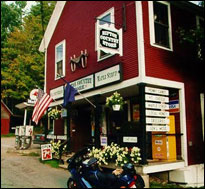Regulatory policies governing alcohol sales and distribution in the United States continue to be informed by a hodge-podge of local and state economic interests, regional customs and cultural norms, and historical legacy ideas about consumption running from the Colonial days through Prohibition and beyond. The very diversity of these policies suggests they do not uniformly rest on social science and public health research. Take for example the wide variety of state laws relating to whether grocery stores can sell alcohol: 12 states prohibit groceries from selling alcohol; six allow the sale of beer; 15 authorize the sale of beer and wine; and 17 allow sales of beer, wine and spirits. States continue to see debates over proposals to modify these laws, many focusing on the wider distribution of beer and wine.
A 2013 study published in the journal Applied Economic Perspectives and Policy, “Economic and Social Implications of Regulating Alcohol Availability in Grocery Stores,” looks to extend what the researchers call the “large body of literature” on the costs of alcohol consumption for society and to examine how the practices of local stores might influence outcomes. For example, to establish correlations with crime rates and traffic fatalities, research has looked at variables such as the density of liquor stores — as well as the effects of different types of outlets — Sunday sales restrictions, and even restrictions on malt liquor. The authors of the 2013 study, Bradley J. Rickard and Teevrat Garg of Cornell and Marco Costanigro of Colorado State University, analyze a wide variety of national and state data on alcohol availability, consumption, pricing, store opening hours and more to assess how the sales of wine, in particular, might shape societal outcomes.
The study’s findings include:
- The data show that “a higher share of wine correlates with lower rates of traffic fatalities, while the opposite is true for beer. Spirits appear to be more strongly associated with traffic fatalities than wine, but less than beer.”
- The findings, however, are complex: “We do not find evidence that introducing wine into grocery stores — either alone or coupled with the introduction of beer — would have an impact on traffic fatalities. Introducing [wine in grocery stores] would increase total alcohol consumption, which would increase total traffic fatalities; however, [it] also increases wine’s share of consumption and decreases beer’s share of total consumption, which would decrease total traffic fatalities. The net effect on traffic fatalities from the introduction of [wine] appears to be negligible — perhaps because it includes these competing effects from changes in total alcohol consumption and from changes in the consumption of the various beverages.”
- The timing of store hours also proves important in terms of safety: “Sale hours for alcohol impacts traffic fatality rates, and policies regarding hours of sale of alcohol at grocery stores should be considered in conjunction with legislative proposals that seek to change alcohol availability in grocery stores.”
- The data have strong policy implications concerning the issue of drinking by minors: “Increases in total alcohol consumption and beer consumption as a share of total alcohol consumption have relatively large effects on youth traffic fatalities. Because youth fatality rates are particularly sensitive to total alcohol consumption, this result highlights the need for policies that can enforce age limits on alcohol sales.”
Related research: Two peer-reviewed metastudies provide insight into the issue of taxing alcohol and corresponding public health outcomes. A 2009 study the University of Florida published in the journal Addiction, “Effects of Beverage Alcohol Price and Tax Levels on Drinking,” finds that the correlation between increased prices and taxes on alcoholic beverages and their decreased consumption is both statistically and practically significant. It suggests that public policies seeking to raise the price of alcohol may be an effective means to reduce drinking. A 2010 metastudy published in the American Journal of Public Health, “Effects of Alcohol Tax and Price Policies on Morbidity and Mortality: A Systematic Review,” further examines the links between alcohol price and risky behavior. The authors state that based on the evidence, it is “beyond any reasonable doubt” that raising the price of alcohol reduces both consumption and the rate of adverse health outcomes. Doubling alcohol taxes, they conclude, would have the effect of reducing traffic crash deaths by 11%, sexually transmitted disease 6%, violence 2%, and crime 1.4%.
Also worth considering are the findings of a 2013 study, “Brand-Specific Consumption of Alcohol Among Underage Youth in the United States,” which outlines the continuing problems in this area, including on illegal purchases and consumption. A 2006 study, “Measuring Public Policy: The Case of Beer Keg Registration Laws,” sheds light on issues related to college and high school drinking, including the diversity of laws around the Unites States, the relative lack of enforcement and the weakness of penalties.
Tags: alcohol, drugs, crime, law, metastudy


Expert Commentary